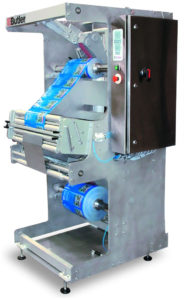Tips for maintaining packaging line equipment
The benefits of pairing autonomous and preventive maintenance strategies are an increase in planned maintenance over unplanned, maximised equipment availability, and the ability to forecast production capacities and maintenance budgets with greater precision.
By William Brum, manager aftermarket parts & service at Butler Automatic
The correct maintenance of packaging equipment is critical to minimising downtime and keeping costs low. With the right strategy, an appropriate inventory of spare parts, and timely upgrades in addition to support from an expert vendor, you can drastically reduce unplanned downtime, keeps costs low, lengthen the service life of your machinery, and maximise profits. With the right maintenance practices in place, even companies with minimal dedicated maintenance staff can reap these benefits and optimise packaging line operation.

1- Utilise preventative maintenance strategies…
The most basic maintenance advice is to create and adhere to a preventative maintenance schedule. These tasks are conducted by qualified maintenance personnel, such as those with electrical or mechanical skills, on a preset schedule in order to prevent issues before they even occur. The value of preventative maintenance lies in being able to plan downtime and necessary materials, rather than being caught off-guard when a component fails.
These tasks often require a more in-depth set of skills than possessed by the average machine operator, and so dedicated maintenance personnel should perform them.
2- …And autonomous maintenance strategies
The best maintenance strategy is one that combines preventative maintenance schedules with autonomous maintenance. These tasks are checklist-based, and focus on basic cleaning and inspection routines performed by machine operators. They have checklists of tasks they are responsible for; typically these must be performed once a shift, day, or week. They are trained to perform the various tasks with simple visual cues.
Butler Automatic is one of the global leaders of automatic splicing solutions and its auto splicers are designed to run in world class manufacturing (WCM) environments, with both autonomous and preventative maintenance plans in place, specifically designed to allow access to critical inspection and cleaning points. Each task is outlined in a checklist-based format and has an associated one-point session (OPL) plan, with visual content provided by Butler.
3- Plan to replace wear components and critical spare parts
It is extremely important to have a plan in place to replace components that are expected to wear out from repeated use, and critical spare parts, which cause significant downtime when they fail. Ideally, manufacturers have these spare parts as inventory so that they can replace them immediately if they fail.
Of course, manufacturers and packagers are also concerned with the funds and space that are tied up in extensive parts inventory.
Butler Automatic is able to continually analyse its customers’ needs for these components and refine the necessary level of parts inventory for each customer to optimise it for their specific needs. Leading equipment manufacturers also offer tailored service agreements that synchronise with customers’ preventative maintenance programs with things like pre-planned visits from qualified field service technicians, for example.
4- Choose a manufacturer who can help in a pinch
This recommendation factors in all three of the previous recommendations, but is of course important in its own right. When purchasing packaging line equipment you are likely to get the kind of service and support you need to keep your line operating smoothly, such as telephone support. This is the service most frequently requested by customers. Installation and training is also important in order to ensure vertical start-up of the production line with any new equipment. Butler Automatic field service technicians are integration specialists trained to quickly resolve any issue on site during installation, including meeting the training needs of both maintenance and production personnel.
5- Plan for upgrades
The final key consideration is to plan to upgrade equipment software and hardware periodically in order to avoid obsolescence. Typically in electronic control and computer systems, both hardware and software become unsupported at some point. When planning ahead you will not be taken by surprise. This can be integrated into your annual maintenance planning and can be supported by manufacturers. Butler Automatic continually improves and updates its machinery, and it also proactively addresses the obsolescence issues.

